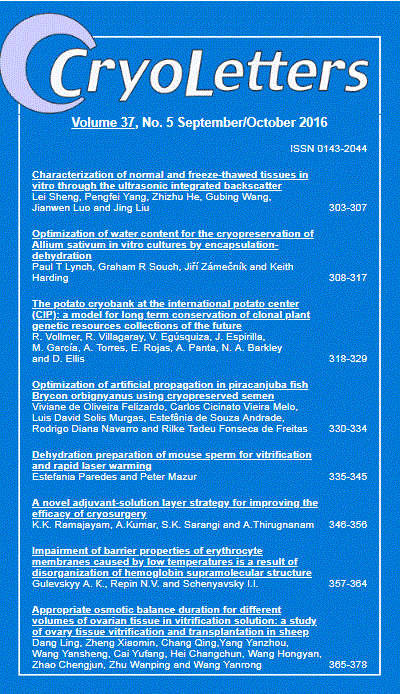The potato cryobank at the International Potato Center (CIP): a model for long term conservation of clonal plant genetic resources collections of the future.
Abstract
BACKGROUND: Cryobanks are a secure, efficient and low cost method for the longterm conservation of plant genetic resources for theoretically centuries or millennia with minimal maintenance. OBJECTIVE: The present manuscript describes CIP’s modified protocol for potato cryopreservation, its large-scale application, and the establishment of quality and operational standards, which included a viability reassessment of material entering the cryobank. MATERIALS AND METHODS: In 2013, CIP established stricter quality and operational standards under which 1,028 potato accessions were cryopreserved with an improved PVS2-droplet protocol. In 2014 the viability of 114 accessions cryopreserved in 2013 accessions were reassessed. RESULTS: The average recovery rate (full plant recovery after LN exposure) of 1028 cryopreserved Solanum species ranged from 34 to 59%, and 70% of the processed accessions showed a minimum recovery rate of =20% and were considered as successfully cryopreserved. CONCLUSION: CIP has established a new high quality management system for cryobanking. Periodic viability reassessment, strict and clear recovery criteria and the monitoring of the percent of successful accessions meeting the criteria as well as contamination rates are metrics that need to be considered in cryobanks.

